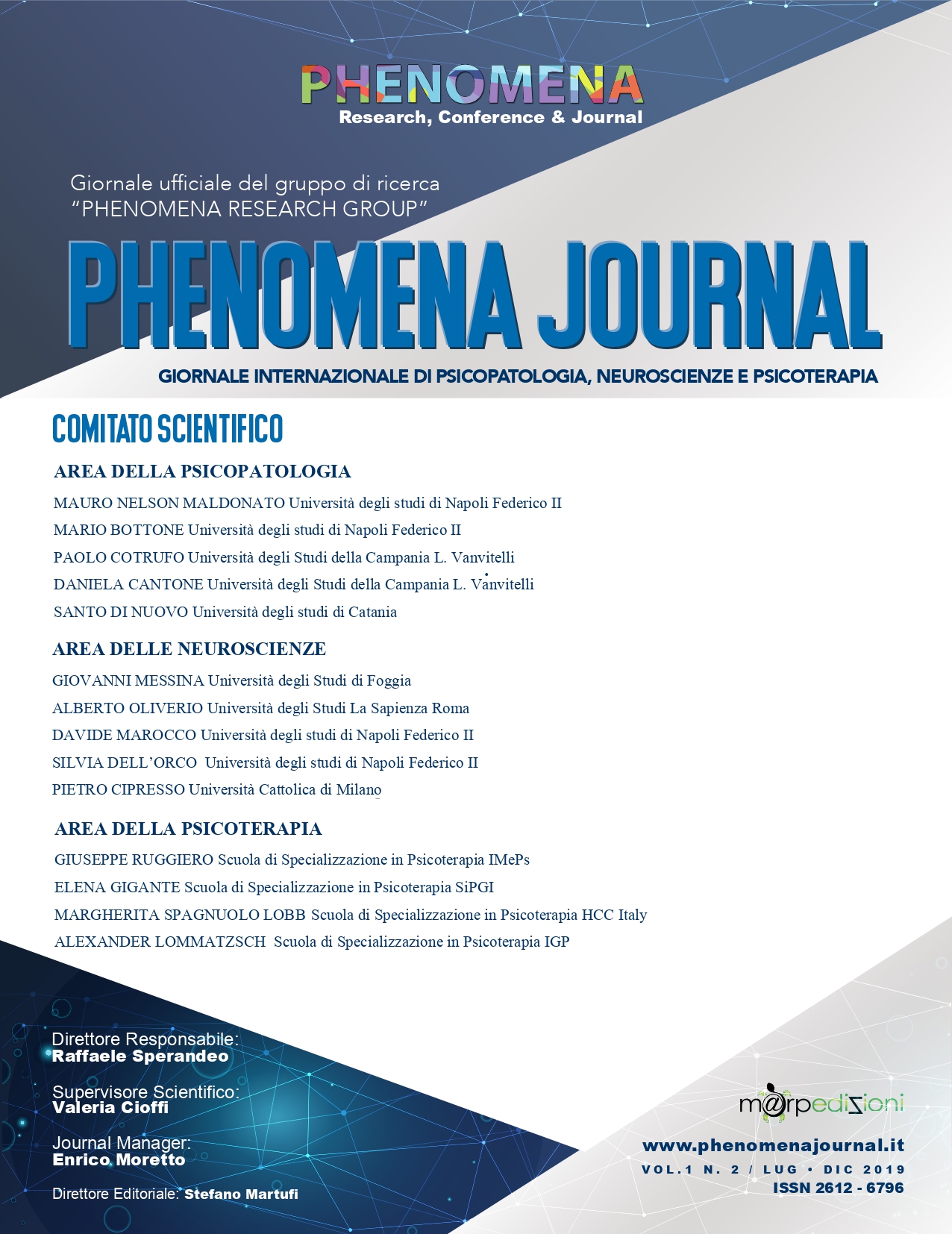The current clinic in psychoanalysis of childhood and adolescence: questions and heuristic hypotheses
Published 2019-11-15
Keywords
- Actual neurosis, a-symbolic psychic functioning, psychopatology of the linking, process of subjectivation
How to Cite
Abstract
The authors begin their dissertation starting from an epistemological question at the center of the scientific interest of contemporary psychoanalytic research, that is to say if in the current clinic we can identify new expressions of codified psychopathologies or we must, instead, think of new categories. Through an examination of the most recent psychoanalytic literature, they propose a reading key of the "current clinic" citing authors for whom the "current neuroses" seem to recur through psychosomatic or somatopsychic manifestations; pre-symbolic or a-symbolic psychic functioning, psychic two-dimensionality, adhesiveness and some "acts", such as attacks on the body so stigmatizing adolescence, where the subject is put in check by the impossibility to remove and to represent himself in a après-coup, a traumatic experience. Following these lines of research and taking up the heuristic value of the concept of unrepressed unconscious, it is hypothesized that in the current clinic an invariant psychism is expressed, of not becoming, but also of the current in the Freudian sense, in which the repeated search for pleasure prevails sensual, rhythmic. The new scenarios of mental suffering describe subjects without significant "words", a representation of themselves that springs from a true encounter with the Other by itself, with extraneous, disturbing aspects, waiting to be perceived, tolerated, thought out and perhaps integrated, but which are instead evacuated, projected together with a sense of self into a virtual dimension (via smartphone, tablet) experienced as a truer reality than tangible reality, and yet not definable as a hallucinatory delusion. Some authors detect the change in becoming a subject and the means to express it, and consequently in psychic configurations and organizations.

